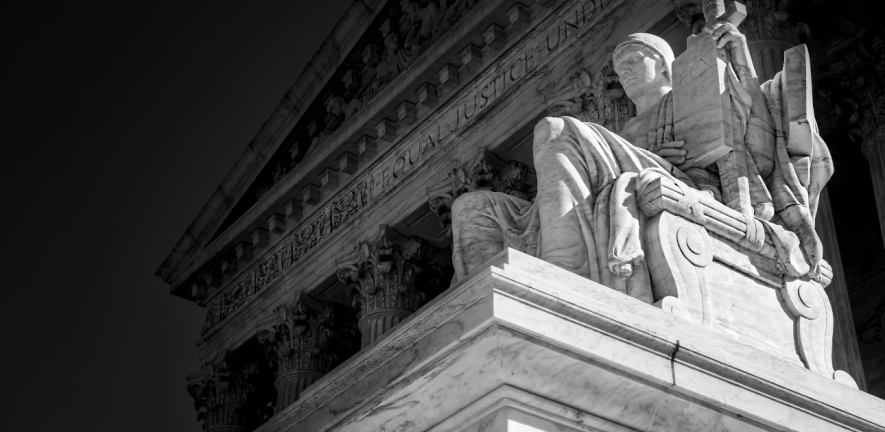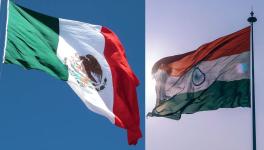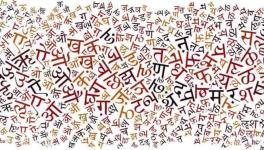Why Recent US Supreme Court Judgment on Affirmative Action is Race to Bottom India Should Avoid

Image credit: The Leaflet
As tumultuous times demonstrate, there are few logical conclusions to the US Supreme Court’s recent decision invalidating race-specific affirmative action admission policies in colleges and universities in the country. The majority ruling in Students for Fair Admission versus Harvard College has far too many shortcomings that are legal nuanced. With the passage of time, a flurry of independent academic investigations into the judgment and these nuances is sure to follow.
For any lay reader even remotely interested in the US bipolar political one-upmanship, the present question is hardly any more about the intense juridical bouts between the Republicans and Democrats in the court. Rather, the Supreme Court’s collective brazenness serves as an example of how unusual the current situation is, casting a looming ignominious spell for a considerable amount of time to come.
After all, assembling ‘splintered-yet-substantial’ majorities still remains an impossible task in a court that sits en banc throughout the year.
The Fourteenth Amendment to the US Constitution
The brazenness lies in the modus that the court invents to subvert the fundamental values that underlie the Fourteenth Amendment to the US Constitution. The amendment was introduced in 1868, only a few years after the conclusion of the Civil War in 1865; thus, it was designed to safeguard the civil rights of the previously enslaved African-Americans.
The aforementioned history thus raises disconcerting apprehensions regarding the Supreme Court’s limited interpretation of the ‘equal protection clause’ invoked to strike down the policies in question. The court ruled that the ‘equal protection clause’ needs to be applied in its true spirit since “equal protection” under the amendment implies no discrimination for anyone whatsoever.
The court interpreted affirmative action policy to be violative of the equality rule as any kind of preferential treatment contradicts the true objective that the amendment envisioned. According to the court, if equal protection under the laws needs to be actualised, it is an admission that there is no space for accommodation.
The tension discussed earlier is visible from the court’s description of college admissions being ‘zero-sum’, where preferential treatment to some applicants comes at the ‘expense’ of others.
Affirmative action in India versus the US
Although the Indian Supreme Court also began its journey at a point where it treated reservations as an exception to the equality rule, it eventually discarded that position in favour of treating affirmative action as a principle supplementing the rule of equality.
The Supreme Court of India has decisively held time and again that an individual’s mere membership of the Dalit community is a reason sufficient for concluding in favour of their backwardness.
This indeed is the true cornerstone of the Indian affirmative action regime, where an individual’s social reality is validly de-hyphenated from their (enhanced) economic status.
The existence of rigid social barriers is presumed uniformly for all the members belonging to the group. Sifting the ‘creamy layer’ citizens from the non-creamy layer ones has been restricted only to the Other Backward Class (OBC) communities as the Indian state firmly resists any attempts of introducing the creamy layer principle within Scheduled Caste and Scheduled Tribe communities.
The Indian affirmative action regime can then better be described as a social ‘advent’ than a political misadventure.
The Indian experiment must be contrasted with the US Supreme Court’s judgment. Authoring the lead opinion for the court, Chief Justice John Roberts’ trifling treatment of ‘colour’ is troubling for it overwhelmingly diminishes the value of colour as a protected category.
Chief Justice Roberts creates a new category that is reliant on a “student’s courage and determination”, where he argues for considering an applicant of colour based on her experiences as an individual— and not on the basis of race.
For an African-American in the US and a Dalit in India, their experiences are nothing more than fait accompli emerging from the stigma of their birth in those respective categories.
Under such circumstances, it is anybody’s guess, much less of Justice Roberts’, as to what carves an individual’s unique set of experiences.
Could their identity being ingrained in the fractures of a history of shame and segregation be the cause of this retribution? There must not be any objectivity in the answers to these concerns.
The US Supreme Court’s long line of judicial dictums on the question of affirmative action policies demonstrates the court’s inconsistency and vacillation on the legacy, future and politics of affirmative action in the US.
This might actually be an authentic hallmark feature of an ideologically packed constitutional court— the sheer inability to treat judicial precedents as gospel truths set in stone. However, the constitutional logic to such judicial posturing is indeed the very semantical framework of the US Constitution itself.
Unlike the Indian Constitution that textually acknowledges, attacks and shatters the discriminatory institution founded by caste, the ambiguous nature of the Fourteenth Amendment to the US Constitution is the source of the Supreme Court’s moral disingenuity on the subject of colour and identity.
The language of the Fourteenth Amendment— “nor deny to any person […] the equal protection of the laws”— enacted a sharp cleaver that could chop both sides. Different courts have used the same provision to either extend or completely snuff out the affirmative action policy in the US.
In India, on the other hand, the exclusive and explicitly worded affirmative action clauses (introduced by successive amendments to the Indian Constitution) promised a social justice revolution that did not have to depend either on whimsical political apathy or on judicial fiat.
It was also immune to what Professor Upendra Baxi terms as the politics of the Indian Supreme Court itself.
Such textual entrenchment left very little to the ambivalence of the Indian constitutional courts, specifically on the ‘whether’ question of affirmative action in India.
It is, however, a constitutional imperative to clarify that the repeated usage of ‘affirmative action’ in the foregoing discussion includes a variety of policies extended by the State in favour of certain groups.
Sprawling over a wide spectrum, these policies range from reservation of seats by way of quotas [as found distinguishably in Articles 16(4) and 16(4A)] to charging concessional fee and relaxation of age, amid others, for various constitutionally-identified groups.
The latter group of policies are distinct from reservation of seats, therefore, they fall under the broader conspectus of ‘affirmative action’ traceable to various clauses of Article 15.
Conclusion
Despite the affirmative action policies’ near-constitutional permanence, their ineffectiveness in holistically transforming the lives of its beneficiaries is nothing short of an incredible failure.
India’s entry year into the Kartavya Kaal (formerly christened as the Amrit Kaal) is heavily underscored by its damning failure in treating affirmative action as something more than just a political sop.
In the larger maze of things, the evolving nature of the Indian affirmative action programmes are noteworthy as they rework themselves by becoming an end in themselves.
The very design of the programmes defies the core social commitments they were slated to help achieve but rather act as ‘political tranquillisers’ that come to the rescue of an Indian State, which, in the words of Rathin Roy, “is transitioning from being a development State to a compensatory one”.
In short, the aggrandising nature of reservations in India periodically makes up for the State’s ineptitude in fulfilling its many basic socio-economic commitments.
However, the calamity in this quiet acceptance of reservations as the sole conclusion of State’s welfarist model is the effective underdevelopment of (primarily) Scheduled Castes and Scheduled Tribes in India.
Even when Scheduled Castes and Scheduled Tribes are brought to the doors of India’s most premiere public educational institutions, their lives inside are a striking testament to all that mere conferment of reservations will never achieve.
Imparting the deprived sections with the requisite skill set that enables them to utilise all that these institutions could offer has hardly been on the state’s agenda ever.
Their experiences are harrowing and their life choices are sabotaged by the limitedness of the circumstances in which they find themselves.
The vicious cycle that originally began with their social segregation, which led to their economic poverty, and was followed by their tremendous socio-economic underdevelopment is then just heightened despite their entry into these prestigious public educational institutions.
Will Dalit Capitalism in India, as Chandra Bhan Prasad has argued, be the panacea that will upturn the caste order? While the idea certainly is ameliorative, the answer to this question may not be as obvious.
The Indian affirmative action programme is certainly in the need of a meaningful and dire politico-legal reform, but the US Supreme Court’s judgment that substantially extinguishes the very principle that made their educational institutions racially representative is in fact a race to the bottom that demands immediate corrective action.
Anant Sangal practises law before the Supreme Court of India and has written extensively on the law and politics of affirmative action in India. He remains indebted to senior advocate Ms Indira Jaising for her detailed and incisive inputs on the earlier draft of this commentary.
Get the latest reports & analysis with people's perspective on Protests, movements & deep analytical videos, discussions of the current affairs in your Telegram app. Subscribe to NewsClick's Telegram channel & get Real-Time updates on stories, as they get published on our website.
























